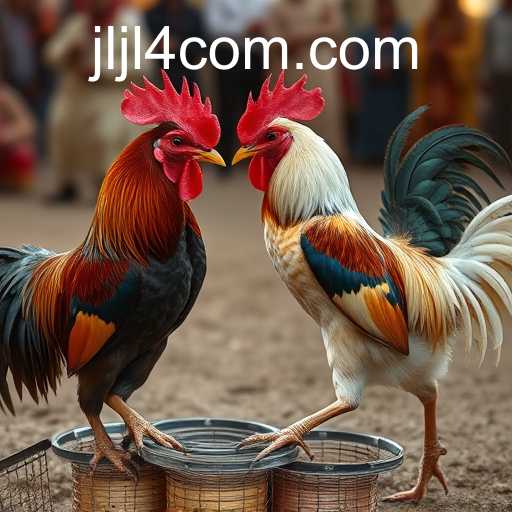Cockfighting: A Clash of Tradition and Controversy
Cockfighting is an age-old practice rooted deeply in history and culture across various parts of the world. Often seen as a cultural tradition in many societies, it also faces significant opposition due to animal welfare concerns. The activity involves gamecocks, specifically bred for strength and aggression, pitted against each other in a fight to the death. Esteemed and condemned alike, cockfighting occupies a unique position culturally and socially in various communities.jjjt
Historical Background of Cockfighting
Cockfighting dates back over 6,000 years, with origins tracing to Southeast Asia, possibly India. Historically, the sport was popular across ancient civilizations including the Romans and Greeks, who celebrated it as both a sport and a religious ritual. It was considered an aristocratic pastime, often associated with royalty and high society, a tradition that influenced the spread of cockfighting to Europe and later, the Americas. Across the ages, the game remained a symbol of luck, bravery, and masculinity.
The Cultural Significance of Cockfighting
In many societies today, especially within Southeast Asia, Latin America, and parts of Africa, cockfighting is more than merely a form of entertainment. It holds a significant cultural value, entwined deeply with local customs, celebrations, and economies. Often cockfights coincide with festivals and major holidays, drawing large crowds that stimulate local economies. For many participants, it is a way of life, embodying community pride and competitive spirit.
The Economic Impact
Cockfighting can significantly impact the economies of rural areas where agriculture may not be sufficient to sustain livelihoods. In places where cockfighting is still legal or operates under informal legality, the breeding, training, and fighting of birds support countless people. From breeders to feed manufacturers, and event organizers to gaming vendors, this tradition sustains an entire economic ecosystem. However, it is essential to note that the economic aspect is double-edged, as money involved in cockfighting often fuels gambling, which can lead to illegal activities.jljl99
Ritualistic Dimensions
Rituals associated with cockfighting often explain its continued prevalence in some cultures. Many people believe in mystical and spiritual forces that can be influenced through these fights. Rituals, offerings, and prayers often accompany events, aiming to ensure fairness in combat and evoke good fortune for participants.jljl99
Legal Status Across Various Regions
The legal status of cockfighting varies significantly worldwide. In some countries, it is permitted and regulated, while in others, it is strictly banned and punishable by law. The disparity primarily arises due to differences in cultural acceptance versus the growing concerns over animal rights.
Regulated Territories
Countries like the Philippines and parts of Mexico officially recognize cockfighting as a national sport, permitting regulated events. These regions have governing bodies that enforce rules to ensure fairness and manage the welfare of participants, although such measures are often criticized for inadequacy. Here, the sport continues to attract tourists, viewed as an integral part of cultural heritage.
Prohibited Areas
In contrast, the United States, the United Kingdom, and many European nations have outlawed cockfighting entirely. Strict animal cruelty laws and growing public awareness have strengthened this stance. Despite this, underground cockfighting rings still exist, often linked to organized crime, making enforcement challenging.
The Ethical Debate
Ethical concerns primarily fuel the controversy surrounding cockfighting. Animal rights activists argue vehemently against the practice, highlighting the inherent cruelty involved. Gamecocks often suffer severe injuries and death, raising significant moral and ethical questions. Activists call for a greater emphasis on animal welfare and strive for global prohibition.
Perceptions and Activism
While proponents often cite tradition and economic necessity as justifications, animal welfare groups stress the need to adapt cultural practices to more humane standards. International organizations work relentlessly to educate and lobby for laws against animal-driven blood sports. Their campaigns stress that cruelty should not be sustained under the guise of tradition.
The Role of Modern Society
The rise of digital platforms and social media has broadcasted images and videos of cockfights to a global audience, intensifying activism efforts. Modern society's shift towards more empathetic and humane considerations places cockfighting under increased scrutiny. Public campaigns and educational programs aim to protect animals from such cruel spectacles while encouraging community-based alternatives that uphold cultural heritage without harm.
Future Prospects
The future of cockfighting is uncertain, with increasing pressure from global advocacy groups pushing for prohibition and enforcement of strict animal welfare laws. Cultural appreciation and heritage preservation must navigate a course toward ethical consciousness, balancing tradition with modern sensibilities. While cockfighting might endure in some regions based solely on cultural significance, the call for global compassion and humane consideration grows stronger.iq777
In conclusion, cockfighting is a practice steeped in ancient tradition, deeply dividing opinion in contemporary society. From its historical roots to its cultural, economic, and ethical implications, the sport persists as a contentious issue. Its presence in global discourse challenges us to confront the values we hold regarding tradition, welfare, and the evolving definitions of cruelty. The debate over cockfighting will likely continue to simmer, reflecting broader conversations about the intersection of cultural identity and ethical progress.en365








